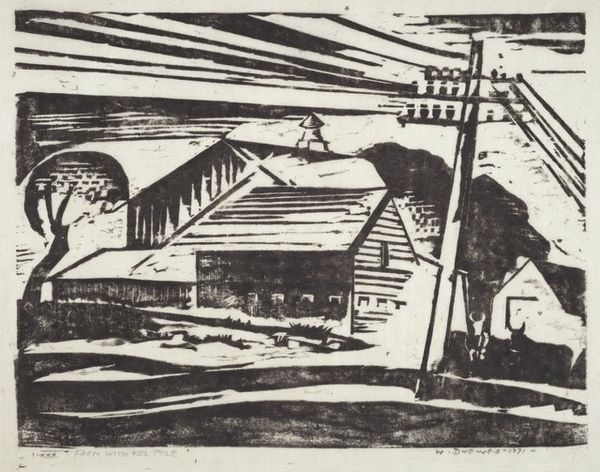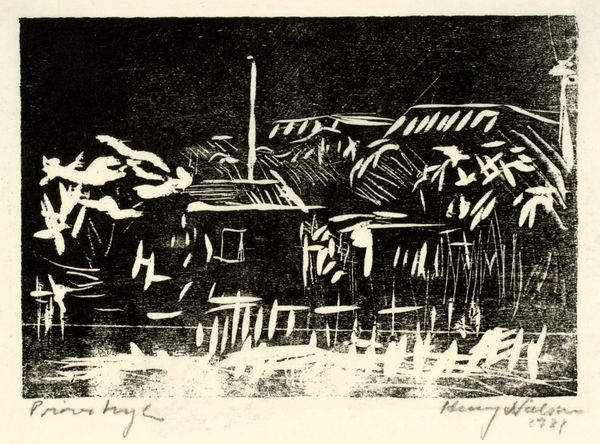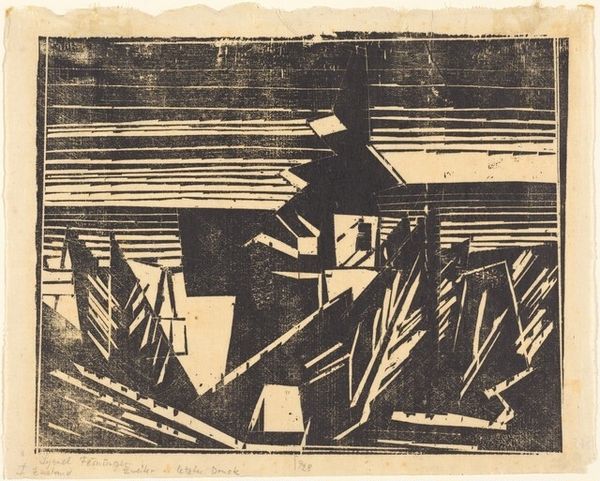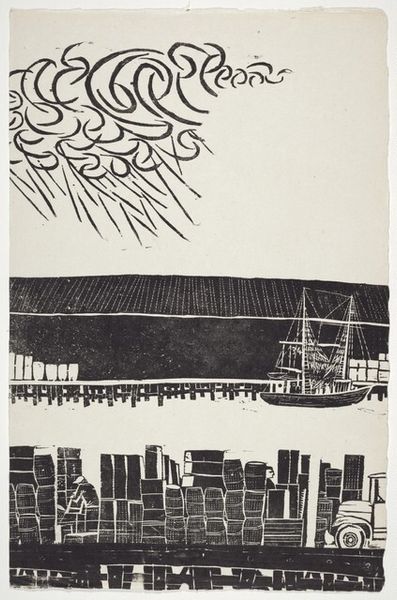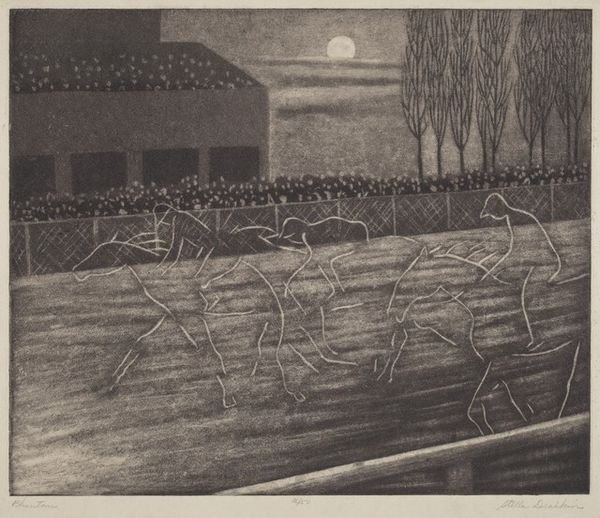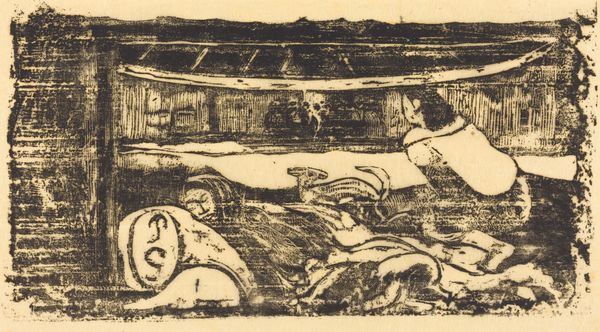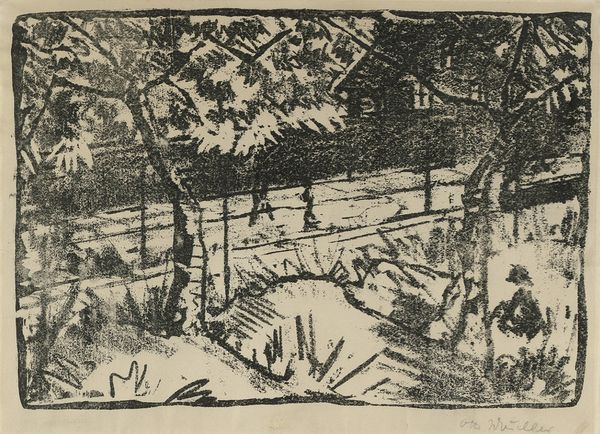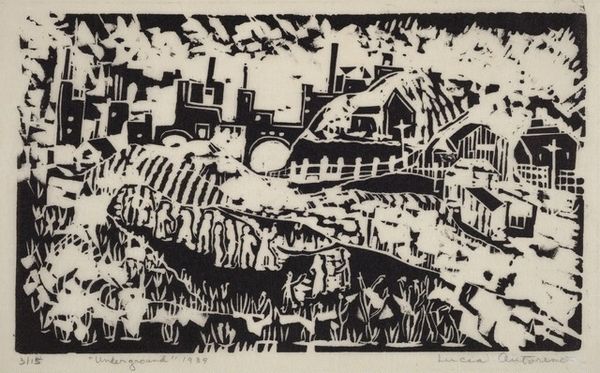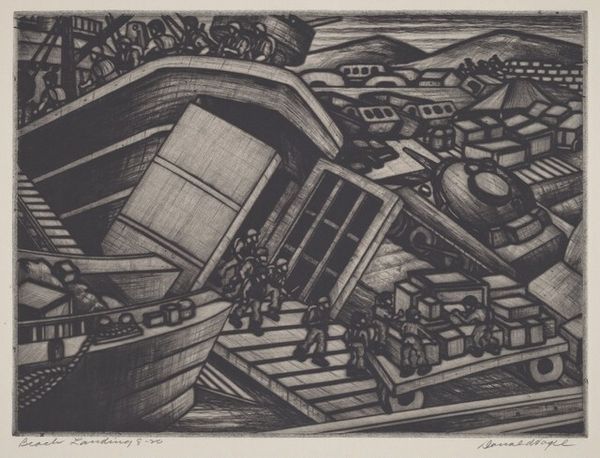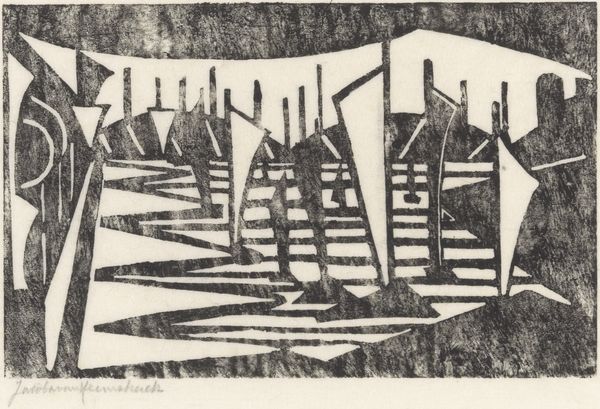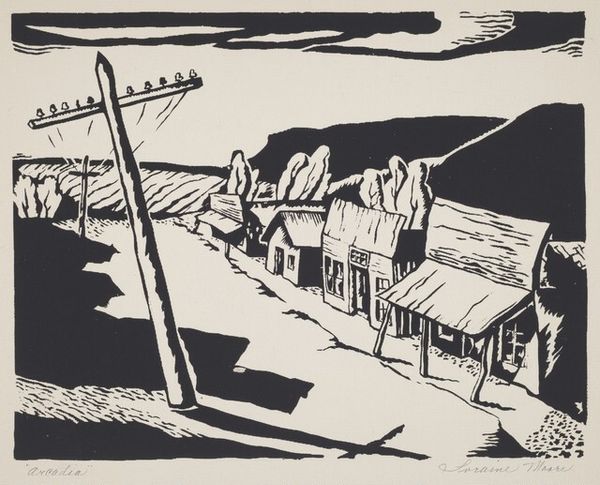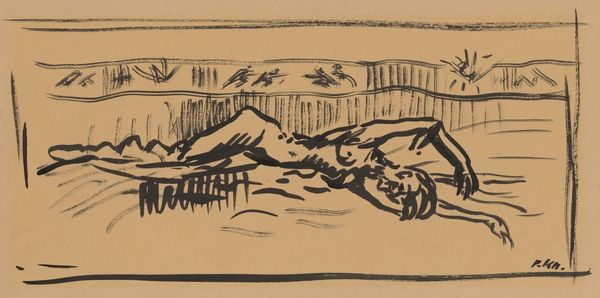
print, woodcut
# print
#
landscape
#
geometric
#
expressionism
#
woodcut
#
cityscape
Dimensions: image: 29.5 × 37 cm (11 5/8 × 14 9/16 in.) sheet: 44.1 × 56.8 cm (17 3/8 × 22 3/8 in.)
Copyright: National Gallery of Art: CC0 1.0
Curator: Looking at "Train Station," a 1913 woodcut print by Werner Gothein, the eye is immediately drawn to the interplay of harsh black and white. Editor: It strikes me as melancholic. The rigid geometry mixed with those figures seems to isolate them, lost amidst a modern urban landscape. The rough texture accentuates this sense of alienation. Curator: Absolutely. The stark contrasts in this Expressionist piece tap into anxieties about modernization, which really dominated social discourse in early 20th-century Germany. Consider the political context: Industrialization altered social and familial structures irrevocably, destabilizing gender roles and labor expectations, particularly after mass conscription for military and industrial labour changed societal and political attitudes toward women and workers in general. Editor: The vertical lines forming the station pillars create this rhythm. It also gives off this somber, almost oppressive visual of columns and pillars from classical architecture or cathedrals of that era, representing permanence and rigid structure, clashing against this dynamic modern force of transport and rapid change. Curator: Yes, that tension is palpable. What seems like an exciting new opportunity for increased mobility became, for some, a heavy visual marker of cultural destabilization and psychological fragmentation of self within the modern city. Those abstracted figures look rather defeated within it, like they're waiting for someone to return who has been taken by industry or war. Editor: Exactly. The limited tonal range makes it intensely graphic, forcing us to see the raw construction, and by extension, question progress at the dawn of technological boom. In an era of heightened symbolic importance of travel by rail, like war-time trains, this is a potent symbol. Curator: That reading layers additional narratives: anxieties about German militarization prior to WWI; and the loss and grief attached to that political upheaval as more young men departed for the fronts. This image presents us with the complexities of change, experienced individually and collectively. Editor: Gothein masterfully captured not just a place, but a cultural mood, an ambivalent relationship with modernization through enduring symbols of society, trauma and collective social progress. Curator: Ultimately, "Train Station" stands as a vital Expressionist work to reflect the unease percolating beneath Germany’s social fabric. Editor: A disquiet that, poignantly, resonates still.
Comments
No comments
Be the first to comment and join the conversation on the ultimate creative platform.
